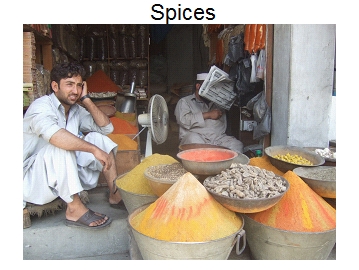|
 Quetta (or sometimes-spelled kwatah) is a city and
provincial capital of Baluchistan. The name
is a variation of kwatkot, Meaning "fort" and the city is still
locally known by its ancient name of Shal or Shalkot. The city is the
divisional and district Headquarters and is an important marketing and
communications center at the north end of the Shal valley about 5500-ft (1675
m) above sea level. It is the southern most point in a line of frontier posts
and in the system of strategic roads and railways near the Northwest (Afghanistan)
border. Commanding the Bolan and Khojak passes, Quetta was occupied by the British in 1876;
a residency was founded by Sir Robert Sandeman, and the town developed around
its strongly garrison army station. Incorporated as a municipality in 1896,
its Army commands and Staff
College was open in
1907. A violent earthquake partially destroyed the city in May 1935, with a
loss of 20000 lives. Now a market center for western Afghanistan, eastern Iran, and part of Central
Asia, its industries include cotton mills, sulphur refinery,
coke briquetting plants, a thermal power station, and fruit canneries. The
city is the site of a geophysical institute, the geological survey of Pakistan, Sandeman, Library, and two
government colleges affiliated with the University of Peshawar.
The University of Baluchistan was established at Quetta
in 1970.Quetta district is bounded north by Pishin district, west by Afghanistan,
east by district and south by Kalat and Chagai districts. Physically, it
comprises a series of long valleys 4500 5500-ft above sea level enclosed by
the Central Brahui range in the south and drained by the Pishin Lora
River and its
tributaries. Its climate is dry and temperate and suitable for valley
cultivation of grape peaches, plums, apricots, apples, almonds, pears, and
pomegranates. Wheat, barley and corn are common crops; juniper and pistachio
forests abound. Horse breeding is widespread. Felts, rugs, silk embroidery
and copper vessels are local handicrafts. Quetta division constituted in 1955. It is
mostly mountainous and is bounded east by Solomon range and north by the
TobaKakar range, separating it from Afghanistan. South of Chaman
(near Afghan border) are the Khawaja Amran and Sarl Ath ranges. Across the
former lies the famous Khojak
Pass with the Shelabagh
railway tunnel piercing 2.5 miles (4 km) of solid rock. From Nushki
(Southwest of Quetta city) to Dalbandin (Southwest of Nushki), the division
consists of a sandy level plain; and Farther west beyond Dalbandin, and
Pishin Lora are the chief rivers. Rainfall is scarce, cultivation depending
mostly on irrigation From karezes (underground channels) in the submontane
area, springs and streams in the highlands, and wells in parts of Sibi Plain.
Wheat is the main Rabi (spring) crop; jowar (sorghum) is the chief kharif
(autumn) crop in the plains and corn in the highlands. Potato growing is also
increasing. Cooking coal is mined at Khost in Sibi and in the Sor range east. Quetta (or sometimes-spelled kwatah) is a city and
provincial capital of Baluchistan. The name
is a variation of kwatkot, Meaning "fort" and the city is still
locally known by its ancient name of Shal or Shalkot. The city is the
divisional and district Headquarters and is an important marketing and
communications center at the north end of the Shal valley about 5500-ft (1675
m) above sea level. It is the southern most point in a line of frontier posts
and in the system of strategic roads and railways near the Northwest (Afghanistan)
border. Commanding the Bolan and Khojak passes, Quetta was occupied by the British in 1876;
a residency was founded by Sir Robert Sandeman, and the town developed around
its strongly garrison army station. Incorporated as a municipality in 1896,
its Army commands and Staff
College was open in
1907. A violent earthquake partially destroyed the city in May 1935, with a
loss of 20000 lives. Now a market center for western Afghanistan, eastern Iran, and part of Central
Asia, its industries include cotton mills, sulphur refinery,
coke briquetting plants, a thermal power station, and fruit canneries. The
city is the site of a geophysical institute, the geological survey of Pakistan, Sandeman, Library, and two
government colleges affiliated with the University of Peshawar.
The University of Baluchistan was established at Quetta
in 1970.Quetta district is bounded north by Pishin district, west by Afghanistan,
east by district and south by Kalat and Chagai districts. Physically, it
comprises a series of long valleys 4500 5500-ft above sea level enclosed by
the Central Brahui range in the south and drained by the Pishin Lora
River and its
tributaries. Its climate is dry and temperate and suitable for valley
cultivation of grape peaches, plums, apricots, apples, almonds, pears, and
pomegranates. Wheat, barley and corn are common crops; juniper and pistachio
forests abound. Horse breeding is widespread. Felts, rugs, silk embroidery
and copper vessels are local handicrafts. Quetta division constituted in 1955. It is
mostly mountainous and is bounded east by Solomon range and north by the
TobaKakar range, separating it from Afghanistan. South of Chaman
(near Afghan border) are the Khawaja Amran and Sarl Ath ranges. Across the
former lies the famous Khojak
Pass with the Shelabagh
railway tunnel piercing 2.5 miles (4 km) of solid rock. From Nushki
(Southwest of Quetta city) to Dalbandin (Southwest of Nushki), the division
consists of a sandy level plain; and Farther west beyond Dalbandin, and
Pishin Lora are the chief rivers. Rainfall is scarce, cultivation depending
mostly on irrigation From karezes (underground channels) in the submontane
area, springs and streams in the highlands, and wells in parts of Sibi Plain.
Wheat is the main Rabi (spring) crop; jowar (sorghum) is the chief kharif
(autumn) crop in the plains and corn in the highlands. Potato growing is also
increasing. Cooking coal is mined at Khost in Sibi and in the Sor range east.
|